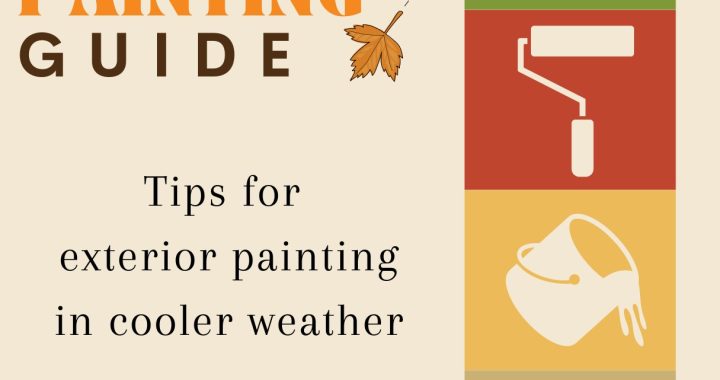Fall’s a great time to get these things finished . . . but painting in cold weather can lead to issues like color uniformity problems, peeling, and even the paint not forming a proper film. Add a bit of moisture, like dew or rain, and you’re looking at surfactant leaching, bubbling, and water spotting.
So there’s the potential for a lot of issues that you don’t want to deal with. But, the good news is you can have great success painting outside in the fall. You just need to keep some key things in mind. Here’s our fall painting guide to help you out!
Temperature
First, let’s talk about temperature. Ideally, we’d all like to paint in the mid-70s with low humidity. That would be perfection.
But that’s not always how life works out. Because of that, there are low-temp exterior paints. All of the exterior waterbased products we carry at RepcoLite can handle temperatures down to about 36 degrees or so.
But, that doesn’t mean just air temperatures. The surface temp is equally critical. For example, a dark surface in direct sunlight might be hotter than the air, while a shaded area might be cooler. So, even with these low-temperature paints, both the surface and air temperatures should ideally be above 40 degrees for at least 24 hours after painting. (Yes, the label on the can says 36 degrees, but if you’re looking for an ideal rule of thumb, 40 degrees is a great number to settle on).
LISTEN TO THE FALL PAINTING SEGMENT ON OUR PODCAST!
(Fall Painting segment begins at 33:13)
Weather
So pay attention to temperatures when you’re working, but also keep an eye on the weather. Ideally, if there’s rain in the forecast in the next 24 hours or so, it’s probably wise to hold off on painting unless you’re going to use Benjamin Moore’s Element Guard.
Element Guard can be used in low temperatures, but it also offers extreme early moisture resistance. In fact, Element Guard is moisture resistant 60 minutes after application. Element Guard is a game-changer for those unexpected fall showers.
The Painting Window
Now let’s talk about the painting window–the times you should be painting and when you should wrap things up each day.
This will vary by the weather and the temperatures, but a good rule of thumb is to start painting mid-morning, once the dew has evaporated, and finish in the early-mid afternoon, allowing the paint time to dry before the temperatures drop later in the day. So, if you’re looking for literal times, we think starting by 11 AM and wrapping things up around 4 PM would be ideal.
Some Final Tips and Considerations
Be cautious about working in direct sunlight even if the temps feel cooler. Depending on the color of the surface you’re painting, it could heat up and cause your new paint to dry too quickly which can lead to brush strokes, an uneven finish, and other issues.
Also, be sure to store your paint at room temperature. It’s tempting to keep it in the garage, but if the temperatures drop in the evening, the paint might be too thick to use effectively until it warms up.
Also, while you’ve got your eye on the weather, don’t forget about the wind. Windy conditions can blow dirt, leaves, or dust onto your freshly painted surface, leading to imperfections. It’s tough to control, but if it’s significantly breezy, it might be better to wait a day if you’ve got a lot of material around the project that could be blown into it. It’s obvious when you think about it, but a lot of us don’t consider it until we’ve started painting.
With the right paint and a bit of planning, Fall can be a great time for exterior painting. If you have any questions or need some product recommendations, swing out to any RepcoLite location and we’ll be happy to help.

